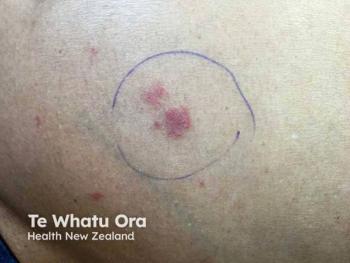
Smooth vs Hairy: What Causes Itch?
A study from the Georgia Institute of Technology examined the difference of itch in hairy vs nonhairy skin.
A study published in the Proceedings of the National Academy of Sciences of the United States of America investigated chronic skin itch and the differences between hairless vs hairy skin.1 About 7% of US adults have dermatitis, a common inflammatory skin condition that causes itching.
“Itch is a significant clinical problem, often caused by underlying medical conditions in the skin, liver, or kidney. Due to our limited understanding of itch mechanisms, we don’t have effective treatment for the majority of patients,” said
There are 2 different stimuli from the nervous system that trigger itch, according to researchers, chemical and mechanical. Researchers identified a neuron population that controls itching in glabrous skin, which causes more difficulty for patients with the condition.
Yearly, there are 200,000 cases of dyshidrosis, which causes itchy blisters to develop on the palms of the hands and soles of the feet and 1.6 million cases of palmoplantar pustulosis, a psoriasis that causes inflamed, scaly skin and itch in the same places.
“That’s actually one of the most debilitating places (to get an itch),” said first author Haley R. Steele, a graduate student in the School of Biological Sciences. “If your hands are itchy, it’s hard to grasp things, and if it’s your feet, it can be hard to walk. If there’s an itch on your arm, you can still type. You’ll be distracted, but you’ll be okay. But if it’s your hands and feet, it’s harder to do everyday things.”
Researchers used mice, as their biologic mechanisms for itch is similar, to test whether they could activate or block the neurons determined to cause the itch. Through these trials, researchers discovered that neurons that send the itch signal are different in glabrous vs hairy skin.
Hairy skin is more difficult to investigate, so the scientists used a new investigative procedure based on contact dermatitis. They could not inject itch-causing chemicals into the mice because of their fur and they needed to focus on the hands and feet of the mice. So, the solution was to activate the set of neurons that causes itch.
“We activated a particular set of neurons that causes itch, and we saw that biting behavior again modeled,” said Steele, referring to how mice usually deal with itchy skin.
The study was set up so 1 set of mice was administered a chemical to kill an entire line of neurons, focusing specifically on MrgprA3+, MrgprD+, and MrgprC11+. It was found that MrgprA3+ and MrgprD+ did not have a role in glabrous skin itch, but MrgprC11+ did and removing it reduced both acute and chronic itching in the soles and palms of the mice.
“To date, most treatments for skin itch do not discriminate between hairy and glabrous skin except for potential medication potency due to the increased skin thickness in glabrous skin,” said Ron Feldman, MD, PhD, assistant professor in the department of dermatology in the Emory University School of Medicine, Atlanta, Georgia. “[These findings] provide a rationale for developing therapies targeting chronic itching of the hands and feet that, if left untreated, can greatly affect patient quality of life.”
Next the researchers are going to investigate how this information is transmitted to the spinal cord and the brain.
Reference:
1. Itch insight: Skin itch mechanisms differ on hairless versus hairy skin: Research breakthrough could inform different treatments for chronic skin itch sufferers. ScienceDaily. Accessed July 26, 2021.
Disclosure:
This work was supported by grants from the U.S. National Institutes of Health (NS087088 and HL141269) and the Pfizer Aspire Dermatology Award to Liang Han.
Newsletter
Like what you’re reading? Subscribe to Dermatology Times for weekly updates on therapies, innovations, and real-world practice tips.


















